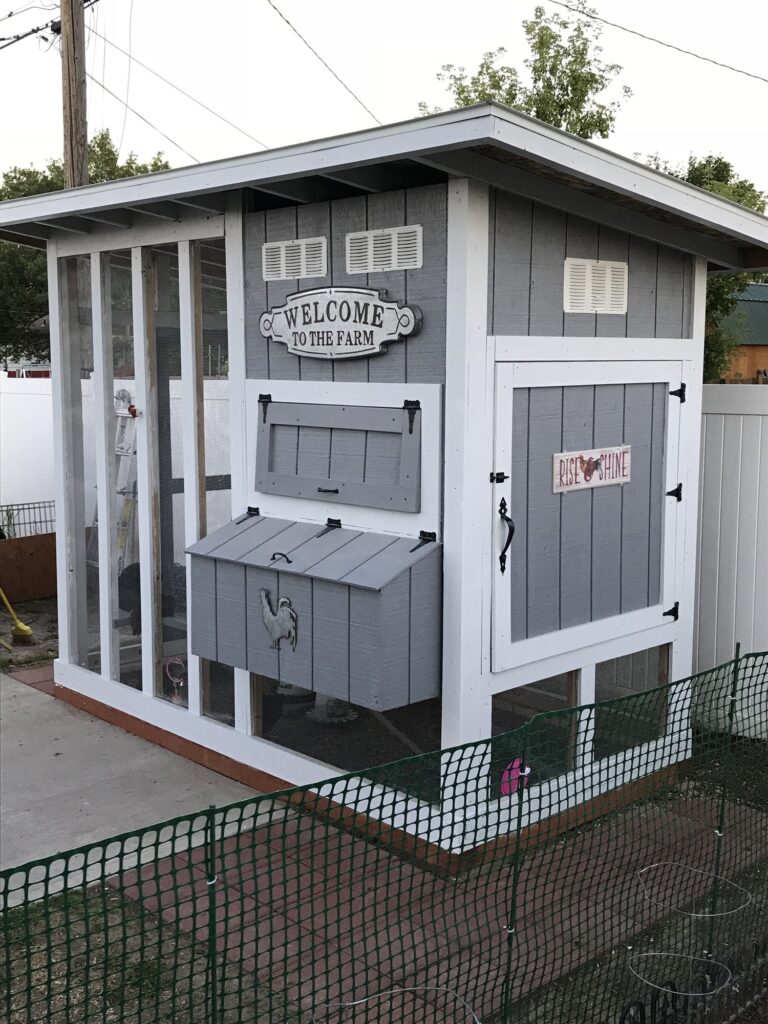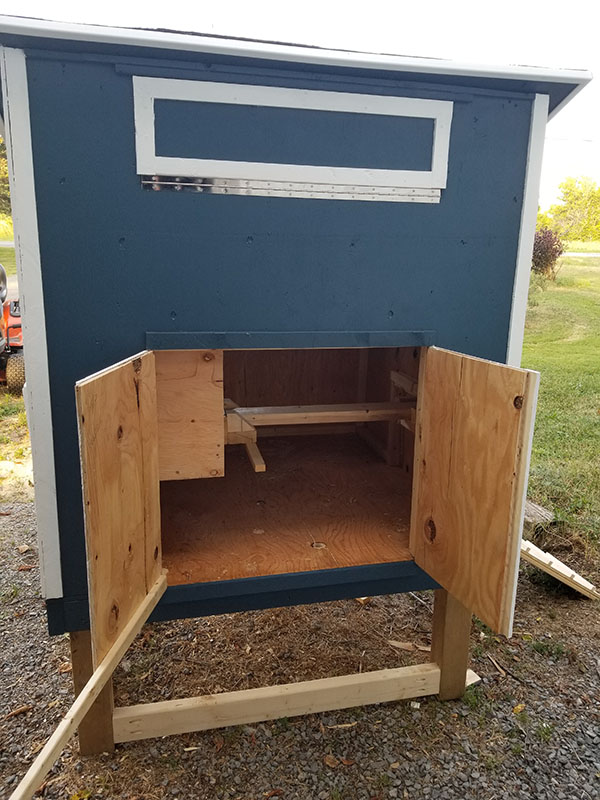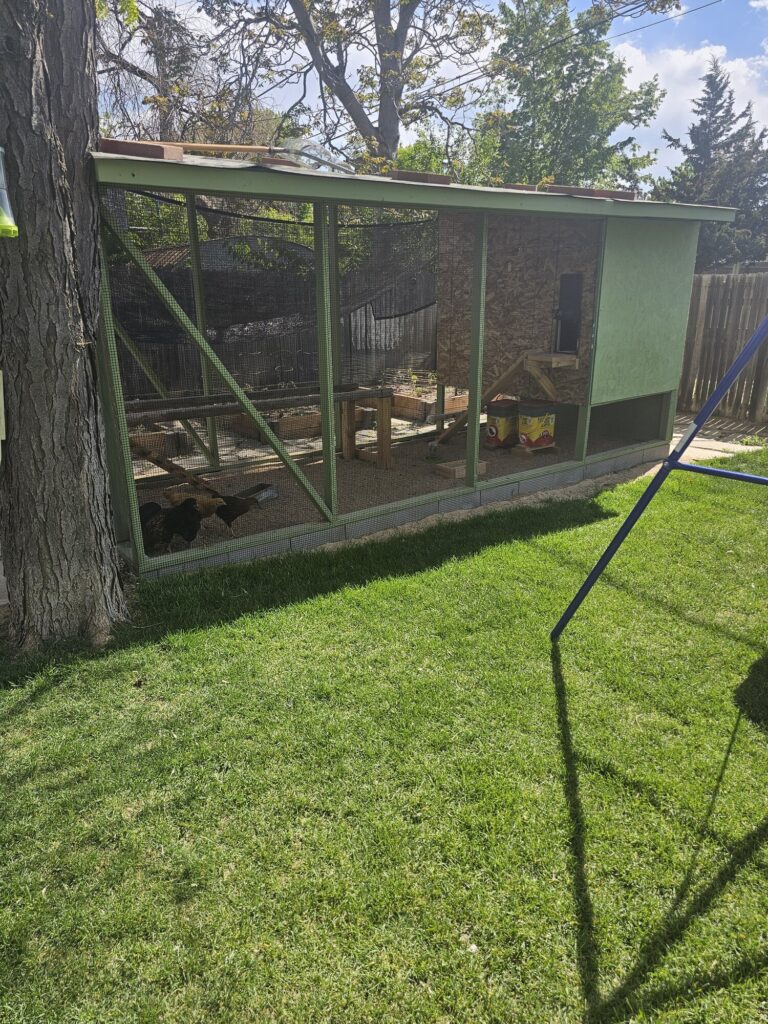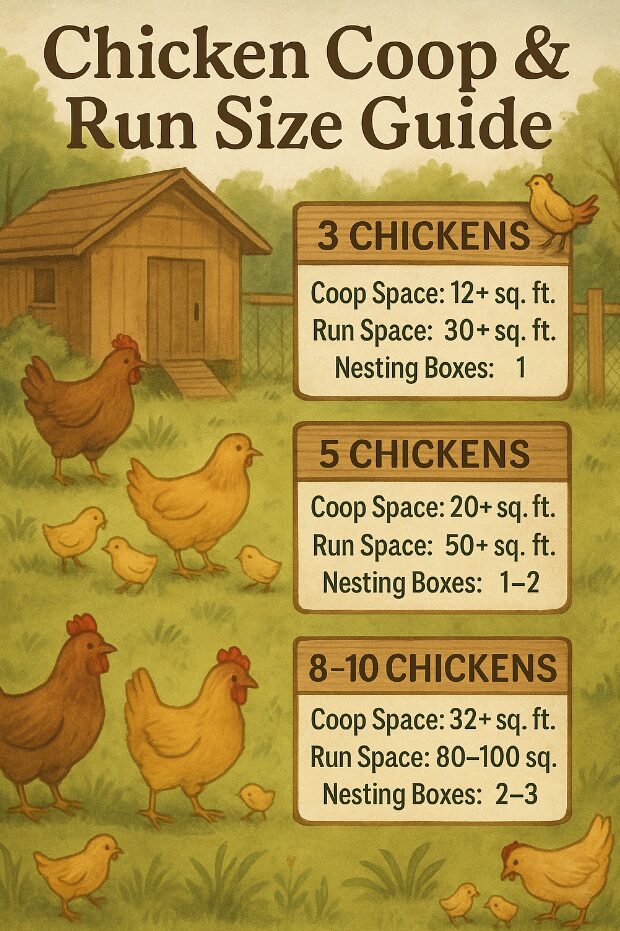Bringing chickens into your life starts with one simple question: how much room do they really need?
If you’ve been reading forum threads, watching coop tour videos, or scrolling Pinterest for setup ideas, you’ve probably seen a dozen different answers. And honestly, the “right” amount of space depends on your goals, your climate, and the kind of birds you plan to keep.
But one thing’s for sure — space is one of the biggest factors in your chickens’ health, behavior, and egg-laying success.
Whether you’re starting with three hens or building out a full backyard flock, this guide will help you figure out the right square footage for both your coop and your run, with real-world advice based on what actually works.
Why Space Matters (And What Happens Without Enough)
Not giving your chickens enough space usually backfires.
They get bored. They start picking on each other.
Sooner or later, you’re dealing with feather loss, broken eggs, or a sick bird in the corner.
Too many chickens in a small coop also means way more mess — more ammonia smell, more cleaning, and more chances for disease to spread.
On the other hand, when they’ve got the room to move around, peck the dirt, flap their wings, or nap on a perch without being stepped on — everything just works better. The flock stays calmer. Fewer injuries. More eggs.
This is especially true if you’ve got bigger breeds like Buff Orpingtons or plan to keep a rooster. They simply take up more space, and you’ll run into problems faster if the coop’s too tight.
If you’re new to chickens, this beginner’s guide walks through everything you need to know before getting started.
How Much Room Do Chickens Really Need?
I’ve discovered that providing chickens with slightly more space is preferable than the minimum. You’ll hear all sorts of numbers thrown around online—2 square feet, 4 square feet, 10 square feet, etc.—but what matters is how your birds actually behave in the space you give them.
At the very least, I’d plan for this:
- Coop (indoor shelter): 3–4 square feet per chicken
- Run (outdoor area): 8–10 square feet per chicken
That means if you’re starting with 4 hens, you’ll want
- About 12–16 sq ft inside the coop
- Around 32–40 sq ft in the run
And that’s if they’re outside most of the day. If you live in a colder climate or expect them to be indoors more often, go larger. It makes a big difference in how peaceful your flock stays.
When I first built my coop, I gave each hen about 5 square feet inside and 10 outside. That extra space helped a ton — especially when one of them went broody or decided she needed her own corner for dust bathing.
Bigger breeds? You’ll need even more elbow room. Buff Orpingtons, Brahmas, and Cochins take up more space just by existing. They don’t move fast, but they don’t like being crowded either.
What Affects How Much Space Chickens Need?
There’s no universally applicable number, as it heavily relies on your setup and the characteristics of your birds. Here’s what really makes a difference:
Breed Size
Larger birds like Orpingtons, Brahmas, and Jersey Giants need noticeably more room than smaller breeds. If your flock includes big-bodied hens, plan for extra space in both the coop and run. Cramming them into tight corners just doesn’t work long-term.
Roosters
A rooster changes the flock dynamic. They take up space, they move differently, and they can be pushy. If you’re keeping one, allow your hens a little breathing room to avoid stress and bullying.
Climate
In warm-weather areas, the coop doesn’t need to be huge since chickens can be outside most of the year. However, if you reside in an area with long winters, your chickens will spend more time indoors, necessitating a larger space to ensure their comfort during prolonged confinement.
Free-Range Access
If your birds are outside most of the day, you can usually downsize their coop and run. However, if you confine them permanently, you must provide them with all the space they would typically enjoy outdoors.
Flock Personality
Some flocks are chill. Others bicker over the same patch of dirt every morning. You won’t always know how your birds behave until you’ve had them a few weeks, but a little extra space goes a long way in preventing drama.
Example Setups for Common Flock Sizes
If you’re just starting out, it’s easy to overthink your setup. So here are a few real-world examples that might help you picture what works — whether you’re keeping just a few hens or planning to grow.
3 Chickens
Perfect for small yards or urban setups.
- Coop space: 10–12 sq ft (something like 3×4 feet)
- Run space: 24–30 sq ft
- A single nest box and a small roosting bar are enough.
- The run should be quiet, manageable, and typically low in drama.
5 Chickens
This is a very common starter flock size.
- Coop space: 15–20 sq ft
- Run space: 40–50 sq ft
- Give them a couple of nest boxes and 5–6 linear feet of roost space.
- You’ll start seeing some hierarchy here, so space helps reduce squabbles.
8–10 Chickens
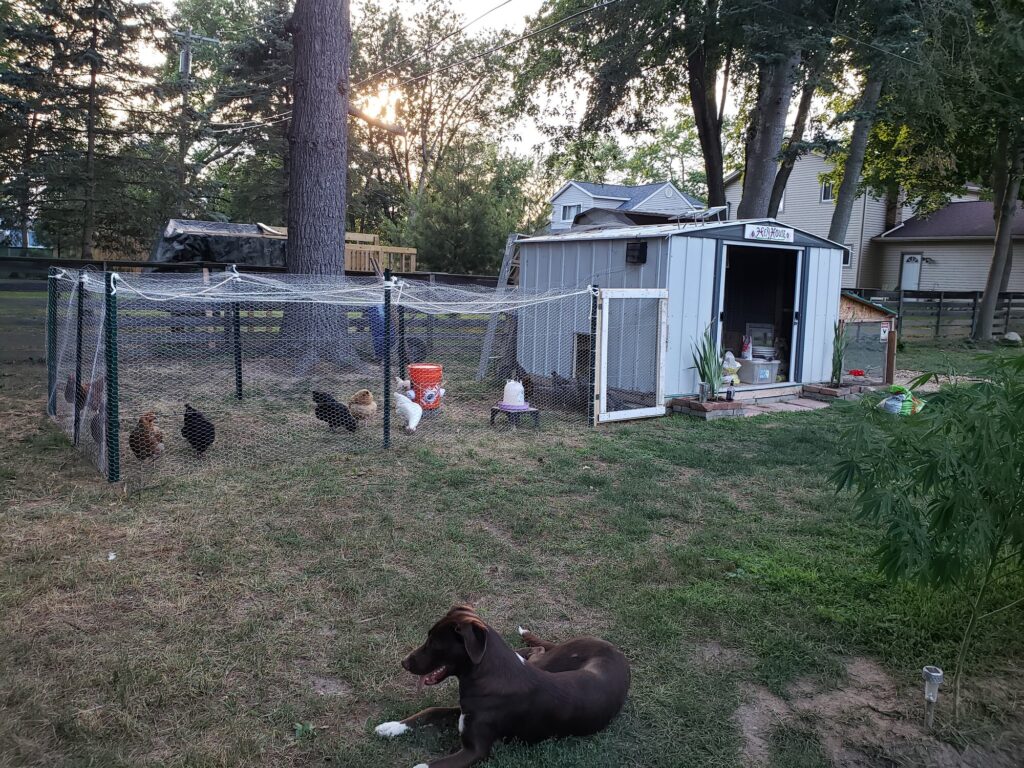
A good setup if you’re planning to share eggs or raise a few breeds.
- Coop space: 25–35 sq ft
- Run space: 80–100 sq ft
- You’ll want 3+ nest boxes, solid roosting bars, and decent ventilation.
- Space matters more at this size — especially if you’ve got mixed breeds or a rooster.
Tip: If you’re on the fence between two sizes, always go with the bigger option. You’ll thank yourself later.
| Flock Size | Recommended Coop Size | Recommended Run Size | Nest Boxes | Roost Space |
|---|---|---|---|---|
| 3 Chickens | 10–12 sq ft | 24–30 sq ft | 1 | 3–4 ft |
| 5 Chickens | 15–20 sq ft | 40–50 sq ft | 2 | 5–6 ft |
| 8–10 Chickens | 25–35 sq ft | 80–100 sq ft | 3+ | 8–10 ft |
Common Mistakes People Make
You don’t need to spend a fortune or build a palace, but here are a few things you’ll want to avoid when setting up your coop and run:
Cramming too many chickens in too little space.
It’s tempting to squeeze in “just one more” hen”—especially when they’re adorable little chicks. But overcrowding is the fast track to bullying, stress, and messy, hard-to-manage conditions. Always build for the flock size you expect, not the one you start with.
Not planning for winter (or rainy days)
Many beginners focus on the run and forget that chickens may be stuck inside the coop during storms or freezing spells. If your winters are long, they’ll need more indoor room than the typical advice says. Chickens that can’t stretch, scratch, or move around will quickly get frustrated—and so will you.
Skimping on ventilation
Tight coops with poor airflow can lead to moisture build-up, frostbite, and respiratory issues — even if they seem “warm.” Good ventilation doesn’t mean drafty; it means fresh air that doesn’t blow directly on your birds.
No plan for cleaning access
If you can’t easily rake, scoop, or hose down your coop, you’ll avoid doing it — and that’s when things start to smell or break down fast. Design with cleaning in mind.
Forgetting predator protection
Even a great coop isn’t safe whether you leave gaps around the base or forget to bury hardware cloth. Raccoons, weasels, and snakes will test your setup — especially if the chickens are in a small, fixed run.
Tips for Maximizing Small Spaces
If you’re working with a small backyard or limited footprint, don’t worry — you can still raise joyful chickens. It just takes a little planning.
Use Vertical Space. Chickens love to hop and roost. Add staggered perches, low platforms, or hanging feeders to free up ground space. Even a few extra inches up makes a difference.
Try a mobile coop (chicken tractor). These are lightweight coops on wheels that let you move your chickens to fresh grass each day. These coops are ideal for providing your chickens with additional foraging space, eliminating the need for a large, fixed run.
Build a Multi-Level Run. If your fencing is tall enough, create platforms or ramps inside the run. It adds enrichment and helps reduce boredom in tight quarters.
Skip the Rooster. If you’re tight on space, a rooster might not be the best idea. They can be more territorial and need more space to avoid tension with the hens.
Let Them Free-Range (Part-Time). If your yard is fenced and safe, consider letting them out for an hour or two a day. Even brief supervised sessions can help them extend their legs and lessen the strain on your run.
Final Thoughts
Giving your chickens the right amount of space doesn’t have to be complicated — but it does make a big difference. Whether you’re working with a small suburban yard or building out a full homestead setup, the key is planning with your flock’s needs in mind.
Start a little bigger than you think you need. Leave room to expand. And above all, build a space that’s easy to manage — because if it’s easy for you, it’ll be better for your chickens too.
Resources:
https://www.backyardchickens.com/forums/coop-run-design-construction-maintenance.9

